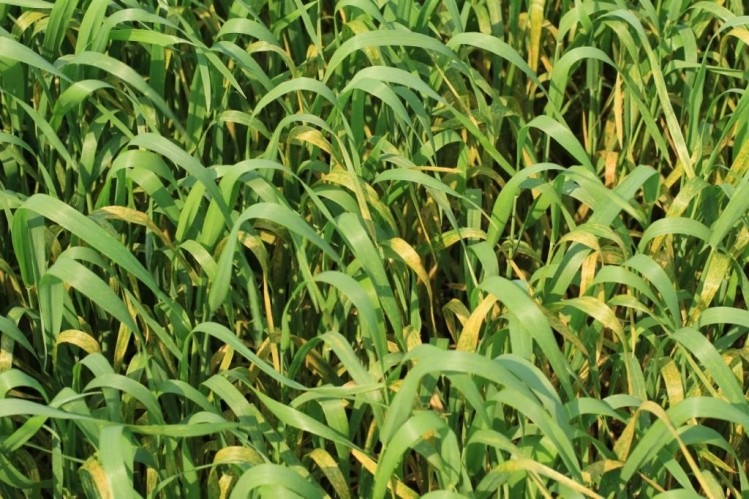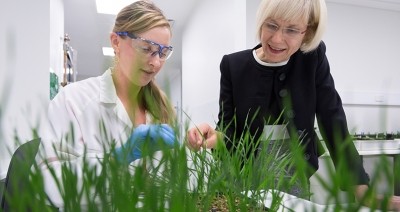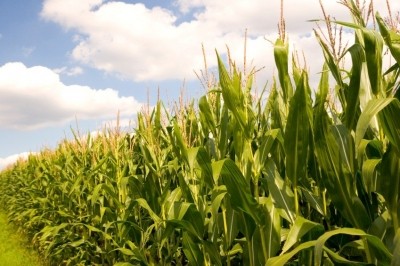Milling & Grains Bite-size science
‘Aggressive’ yet perplexing Australian wheat stripe rust, barley & osmotic stress, weed reduction and increased wheat root biomass doesn’t mean higher yield

Rising Australian wheat stripe rust not a product of temperature adaptation
The increased perceived aggressiveness of stripe rust—one of the major fungal pathogens of wheat— may be due to factors beyond higher temperatures, researchers suggest.
Ever since a new stripe rust pathogen (caused by Puccinia striiformis f. sp. Tritici), surfaced in Australia in 2002, the severity and frequency of outbreaks since then has been suggested to be a result of traits other than virulence in the pathogen population. Researchers examined the effects of different temperature regimes on stripe rust pathogens to determine if they’re better adapted to warm temperature conditions compared to previous pathogen populations.
Sixteen pathotypes were selected to examine the influence of two contrasting temperature regimes during the 24 h incubation (10°C and 15°C) and the subsequent post-inoculation (17°C and 23°C) periods on latent period and infection efficiency on four susceptible wheat cultivars. In addition, the effect of two contrasting incubation temperatures on urediniospore germination was examined. The results indicated that pathotypes of P. striiformis f. sp. tritici detected after 2002 did not show evidence of adaptation to high temperatures.
Source: Molecular Plant Pathology
DOI: 10.1111/mpp.12116
“Wheat strip (yellow) rust caused by Puccinia striiformis f. sp. tritici”
Authors: Wanquan Chen, Colin Wellings, Xianming Chen, Zhengsheng Kang and Taiguo Liu
Barley growth susceptible to osmotic stress
Osmotic stress at the root of barley plants can alter the pattern of circadian clock gene expression in the barley shoot, thus acting as a spatial input signal into the circadian clock, according to research published in Plant, Cell & Environment.
Barley growth and primary assimilation appears less controlled by the clock and more responsive to environmental perturbations, such as osmotic stress, compared to the model organism Arabidopsis.
The circadian clock controls physiological responses to abiotic stresses in plants. However, to date there has been little information on the effects of the clock on stress adaptation in important food crops like barley. For the study, researchers grew barley genotypes carrying natural variation at the photoperiod response and clock genes Ppd-H1 and HvELF3 under control and osmotic stress conditions to record changes in the diurnal expression of clock and stress-response genes and in physiological traits.
They found that variation at HvELF3 affected the expression phase and shape of clock and stress-response genes, while variation at Ppd-H1 only affected the expression levels of stress genes. Osmotic stress up-regulated expression of clock and stress-response genes and advanced their expression peaks.
Source: Plant, Cell & Environment
DOI: 10.1111/pce.12242
“Osmotic stress at the barley root affects expression of circadian clock genes in the shoot”
Authors: Ermias Habte, Lukas M. Muller, Munqez Shtaya, Seth J. Davis and Maria Von Korff
Crop sequence, tillage lower weed populations in wheat crops
Crop sequence in combination with tillage can help control troublesome weed species, according to new research on wheat crops in Iran. Moreover, safflower and canola can be effective in decreasing grass weeds.
Field experiments were conducted in Iran in order to determine the interactions between the tillage system and crop rotation on weed seedling populations and crop yields from 2002 to 2005. The main plots were no tillage, shallow tillage and deep tillage. The subplots were three crop sequences comprising continuous wheat (W-W), wheat–canola–wheat–canola (C-W) and wheat–safflower–wheat–safflower (S-W). The researchers found the dominant weed species to be Bromus japonicus, Carthumus lanatus, Polygonum aviculare, Lolium temulentum and Avena ludoviciana.
The initial weed population in 2002 was estimated at 65 seedlings per m2 and B. japonicus (∼35 seedlings per m2) was the most abundant species, followed by A. ludoviciana and L. temulentum. The dominant weed species mostly did not favor the combination of S-W and C-W with any tillage type. For the B. japonicus population, S-W in combination with moldboard plowing indicated the lowest seedling population.
Source: Weed Biology and Management
DOI: 10.1111/wbm.12047
“Interactions between the tillage system and crop rotation on the crop yield and weed populations under arid conditions”
Authors: Mansoor Sarani, Mostafa Oveisi, Hamid Rahimian Mashadi, Hassan Alizade and Jose Luis Gonzalez-Andujar
Rye chromosomes boost wheat root biomass, but not necessarily yield
Increasing the number of short-arm rye (Secale cereale L.) chromosome 1 (1RS) in wheat (Triticum aestivum L. cv. Pavon 76) increase root biomass, but there’s no correlation between root biomass and grain yield, according to a study from researchers at University of California, Riverside.
The researchers completed two greenhouse experiments and a field experiment under well-watered and terminal drought treatments to evaluate phenotypic characters associated with varying dosages of 1RS, including grain yield. The genotypes used were cultivar Pavon 76 (R ), Pavon 76/Pavon1RS.1AL (F1 hybrid) with a single dosage of 1RS (R1A), Pavon 1RS.1AL with two dosages of 1RS (R2A), Pavon 1RS.1DL (R2D) also with two dosages of 1RS and Pavon 1RS.1AL-1RS.1DL (R4AD) with four dosages of 1RS.
They found a significant positive correlation between number of dosages of 1RS and root biomass. However, no correlation was found between root biomass and grain yield per plant. Drought in the field experiment reduced grain yield significantly. Under well-watered field conditions, grain yield of R2A (215.9 g plant−1) was significantly greater than those of R2D (191.8 g plant−1) and R4AD (161.7 g plant−1). Also, grain yield of R4AD was significantly less than those of F1, Pavon 76 and R2D under well-watered conditions. Under drought field conditions, no significant differences were found among the genotypes for grain yield was found between F1 (14.7 g plant−1) and R4AD (12.4 g plant−1).
“The lack of significant correlation between grain yield and root biomass was an indication that there is an optimum root biomass in maximizing grain yield,” the authors wrote.
Source: Journal of Agronomy and Crop Science
DOI: 10.1111/jac.12077
“Yield Performance of Wheat Isolines with Different Dosages of the Short Arm of Rye Chromosome 1”
Authors: D. C. Maheepala, B. Ehdaie and J. G. Waines









